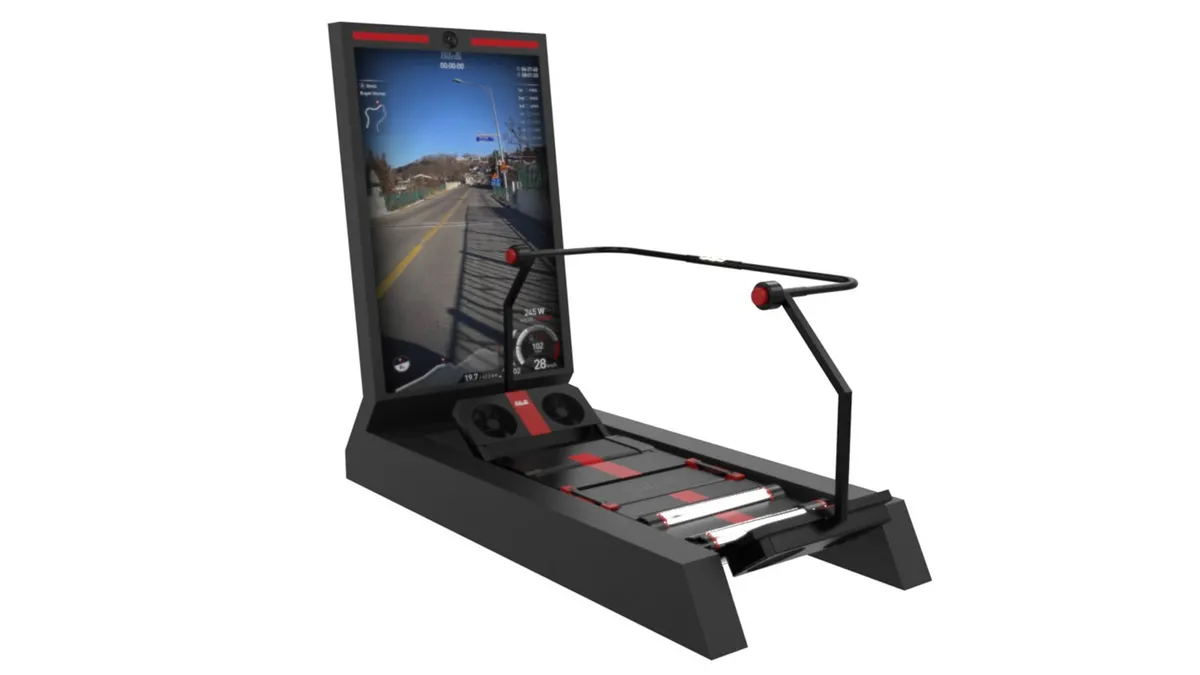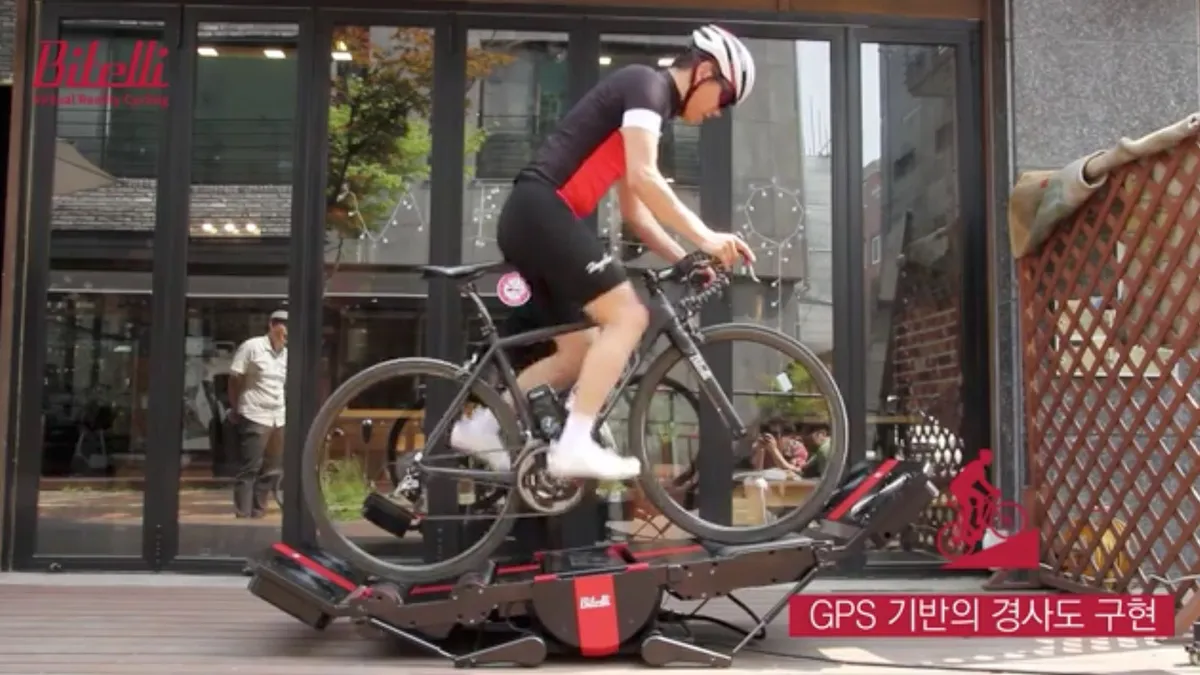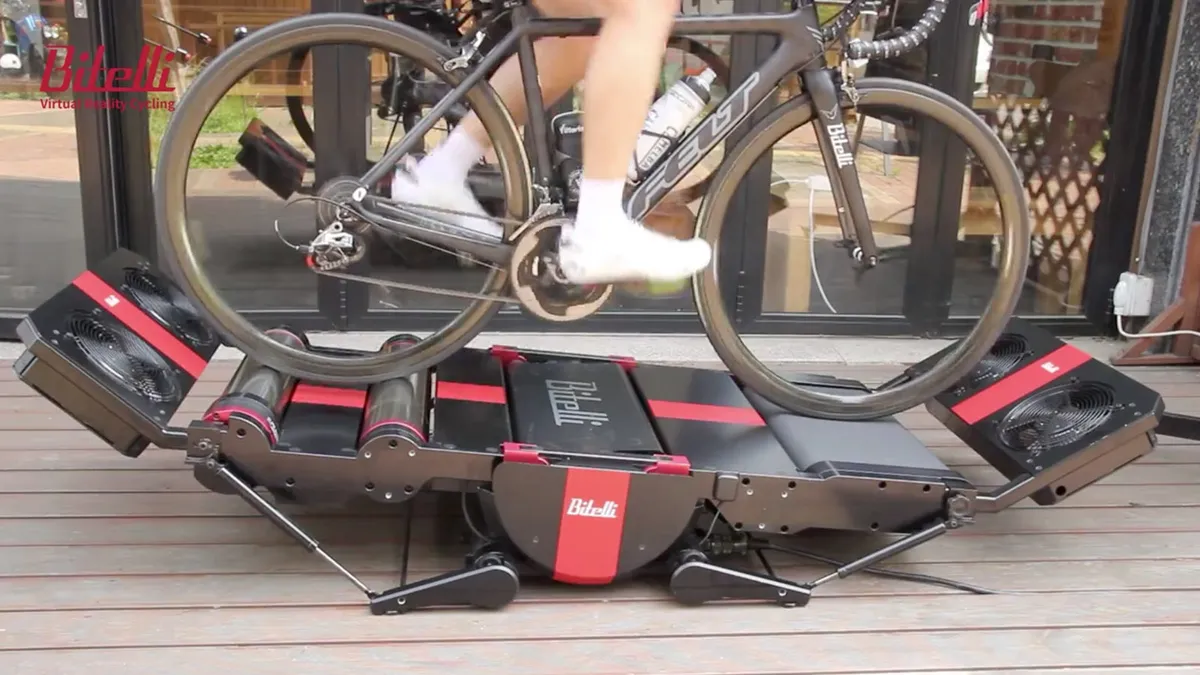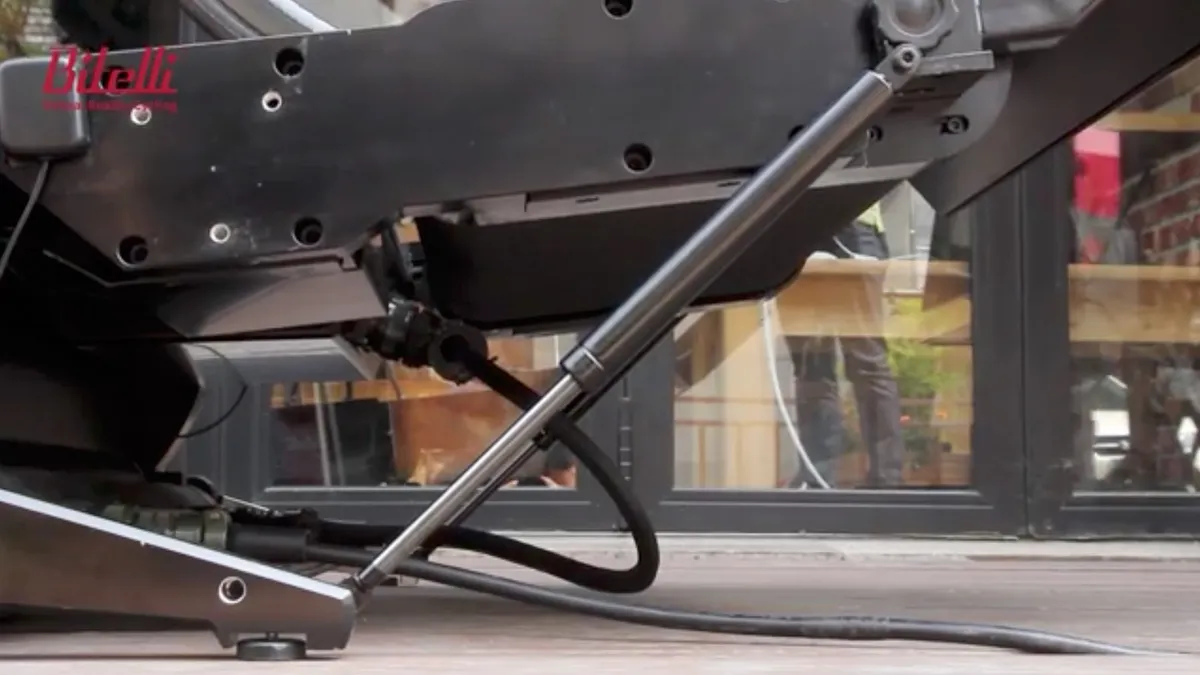Remember those games at the arcade where you sat in a fibreglass car that tipped, tilted, and shook as you raced around a virtual track?Well now you can have the same experience riding up Mont Ventoux, Alpe d'Huez, or Passo di Stelvio in the comfort of your personal pain cave.
The Bitelli virtual reality bike trainer is essentially a set of rollers, where the gradient and resistance can be adjusted to simulate real-world riding conditions. Depending on how deep your pockets are, there’s also the option to add wind via fans, a safety rail and a 65in flat screen for a fully immersive experience.
Check out the bitelli trainer in action
Check out the Bitelli trainer in action
There are three models on offer, with the top two featuring hydraulic presses that can automatically adjust based on based terrain from a pre-uploaded course to simulate up to a +/-20 percent grade, or can be manually adjusted for targeted training. To prevent you from tipping off the back, it appears your bike can be tethered to the unit either at the rear axle, or behind the head tube and around the seatpost.
As with traditional rollers, at the back there are two drums that can produce up to 1600 watts of magnetic resistance, while at the front there’s a ‘treadmill’, which Bitelli says offers a safer riding experience than the traditional three-drum roller setup. To simulate head- and tailwinds there’s an option to add fans, which also automatically adjust based on speed.
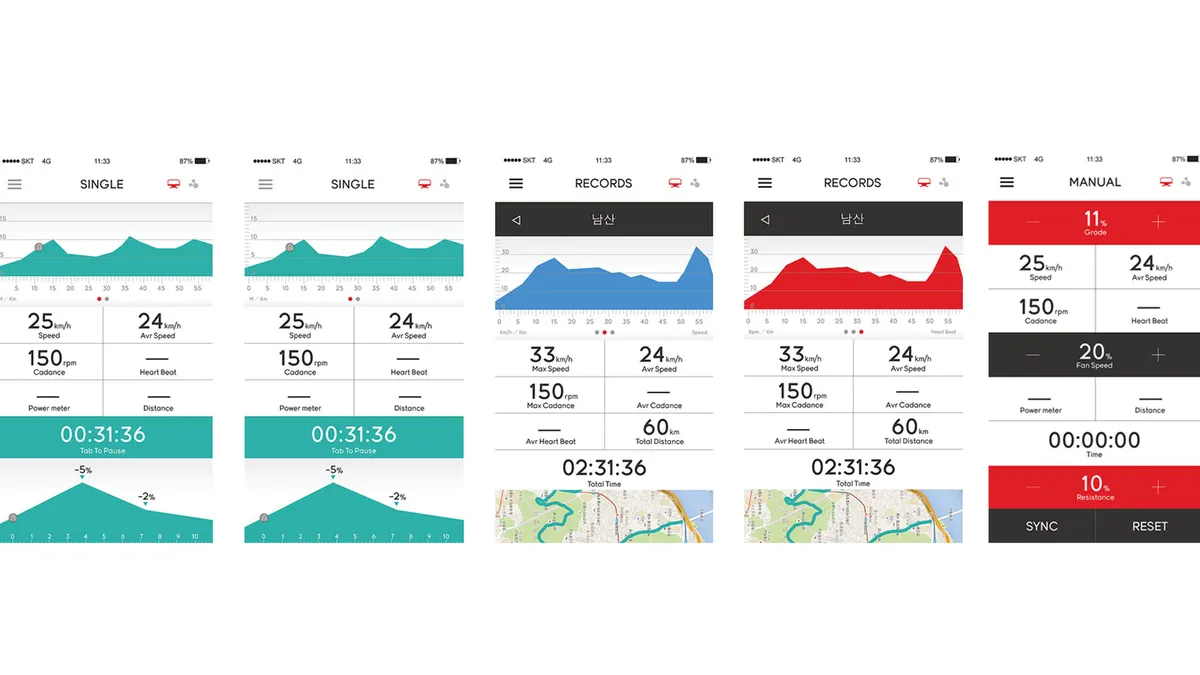
From the app GXP files can be used to control the resistance and tilt – or they can be manually controlled for specific workouts
Acting as the brains of this showy training system, Bitelli has created an app that allows you to manually adjust aspects like resistance, wind and gradient for targeted training, as well as import GPX files to simulate real-world terrain. The South Korea-based oufit also says its app is ANT+ compatible and tracks key metrics like power, heart rate and speed. Available for both IOS and Android, there’s no word yet on whether the Bitelli system plays nice with third-party applications such as Training Peaks or Zwift.
If you’ve got room in your bike torture chamber for such an arcade game it won’t come cheap, with the bare bones version costing roughly $3,300 / £2,350 / AU$4,500 and the gradient-adjustable version worth upwards of $6,200 / £4,300 / AU$8,400
